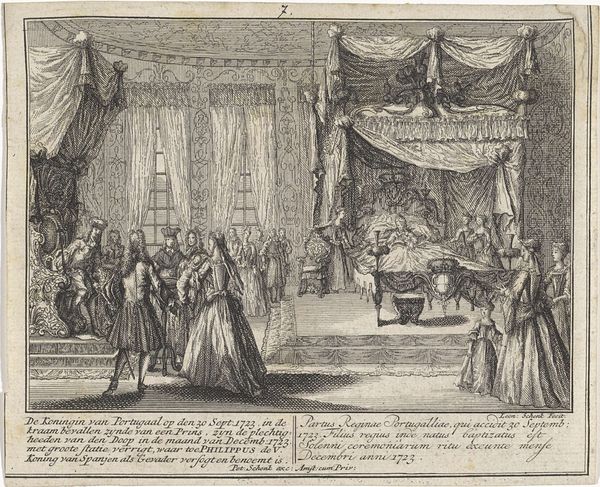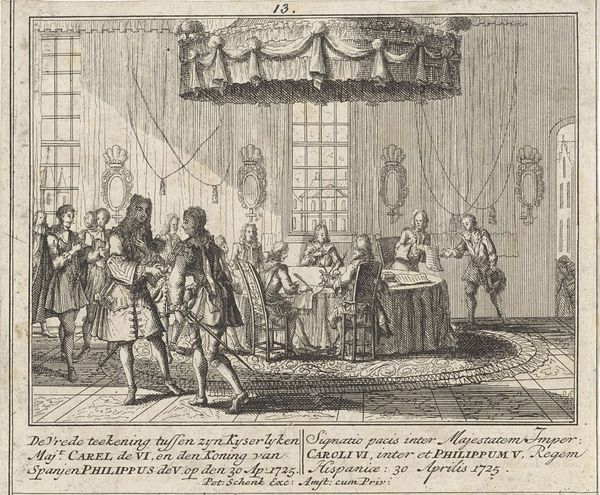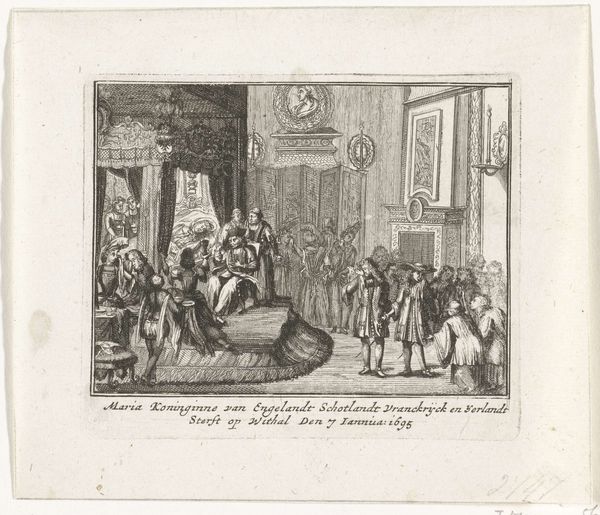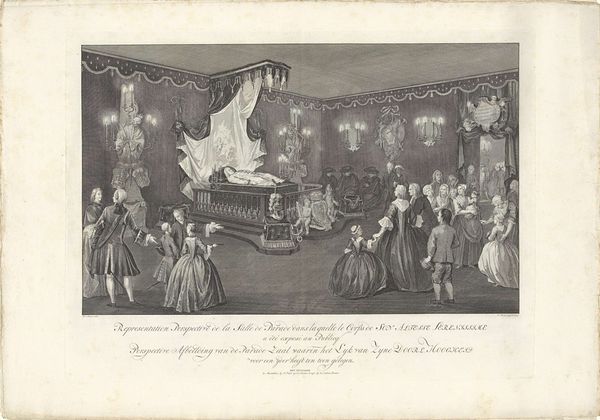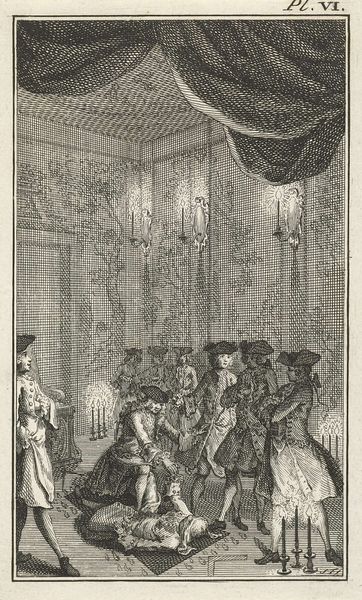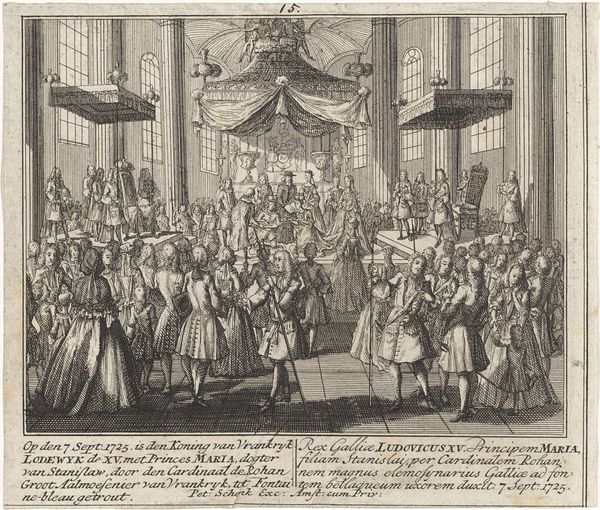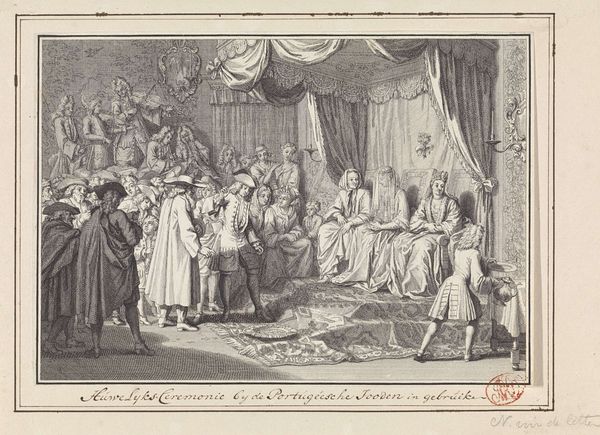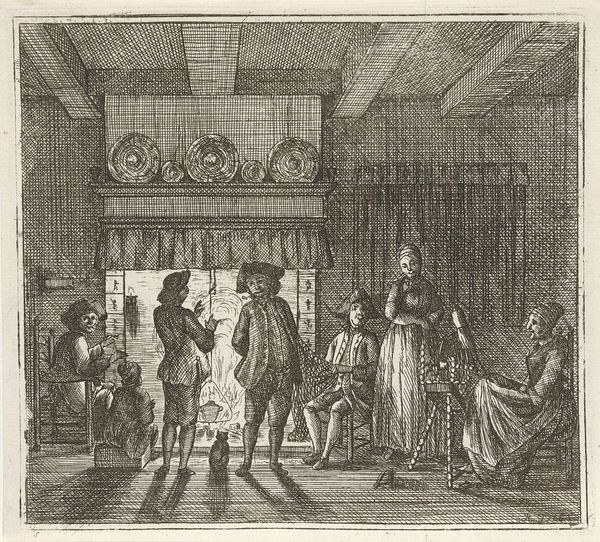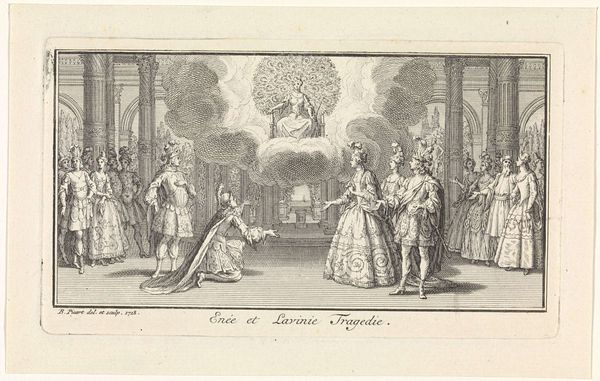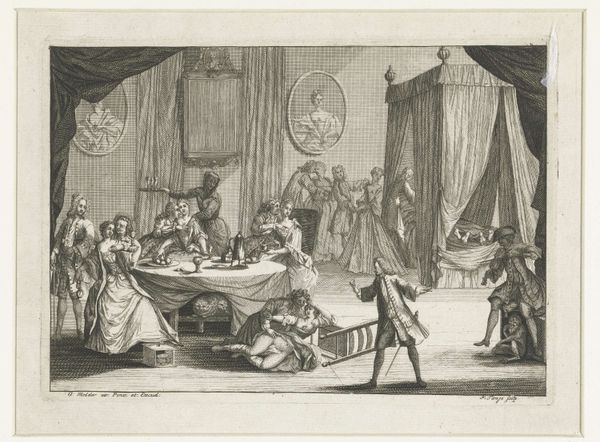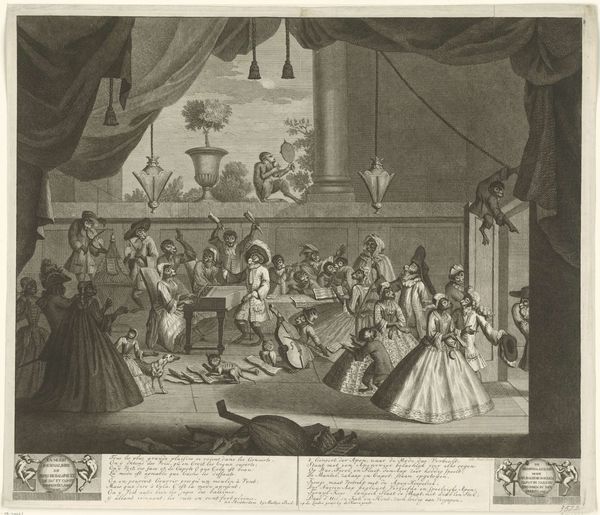
Frederik Willem II neemt afscheid van de prinses en haar kinderen, 1788 1788
0:00
0:00
Dimensions: height 214 mm, width 315 mm
Copyright: Rijks Museum: Open Domain
Curator: What strikes you first about this etching entitled "Frederik Willem II takes leave of the princess and her children, 1788"? Editor: The room, overwhelmingly so. It’s immense, really highlighting the rigid social structures through architectural grandeur and an almost performative grief. Who even designed this space, it’s so excessive? Curator: The print, made in 1788, documents a royal departure. Let's think about the engraver's process. He or she likely worked from an existing painting or drawing, meticulously translating brushstrokes into lines. Consider the labor involved, the precise control needed to convey textures of the fabrics and the cold formality of the room through sheer, repeatable strokes. Editor: Yes, it definitely speaks to labor; who produces imagery and how it circulates is essential. Here, it seems deliberately meant to convey dynastic strength, yet paradoxically the very scene of departure signals vulnerability. It raises questions about the gendered nature of power too: the King leaving, the princess staying, bound to the domestic sphere even amidst what seems a state event. The materiality of this print - its availability - it's a potent means for dispersing that controlled narrative, literally etching those power dynamics into the public's mind. Curator: Absolutely. The use of line creates this stark emotional landscape. And note the way the light from those many candles accentuates surfaces, creating a play of luxury across rigid forms that emphasizes material wealth. There’s an intense consumption of wax involved in even creating that scene. The abundance contrasts sharply with the potential fragility of the familial bond at the image’s core. Editor: And I would challenge us to look deeper into the role of these grand historical narratives. It's imperative to critically assess whose stories are centered and which are actively marginalized. In what ways does this idealized print reinforce existing societal biases, perhaps in terms of race or class? It is about asking who benefits from such displays and at whose expense? Curator: Indeed, while appearing to capture an intimate moment, this etching primarily serves a political function. Editor: Absolutely, the art itself acts as an artifact within complex intersectional histories of power, gender and society at large. I leave reflecting about who it really addresses and what reactions the author meant it to cause when produced.
Comments
No comments
Be the first to comment and join the conversation on the ultimate creative platform.
